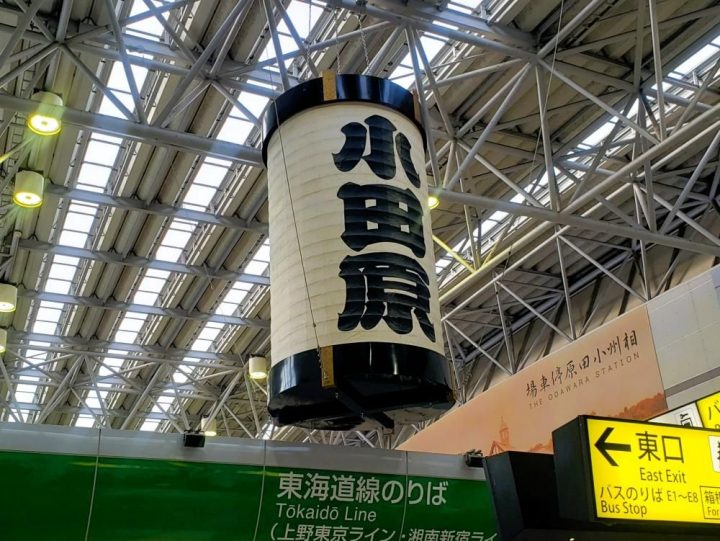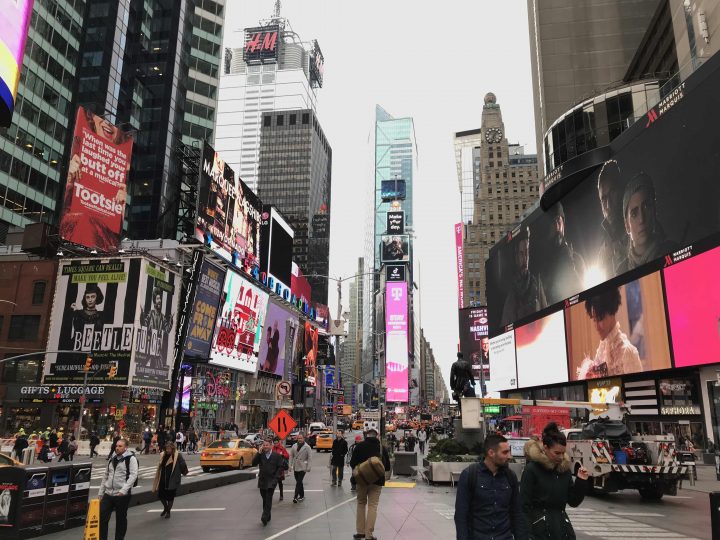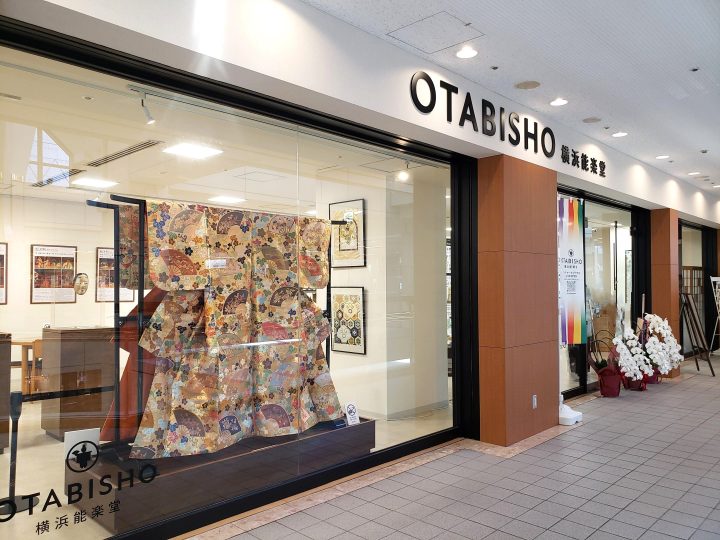A new Kyogen play "Rokujizo" that was performed with children
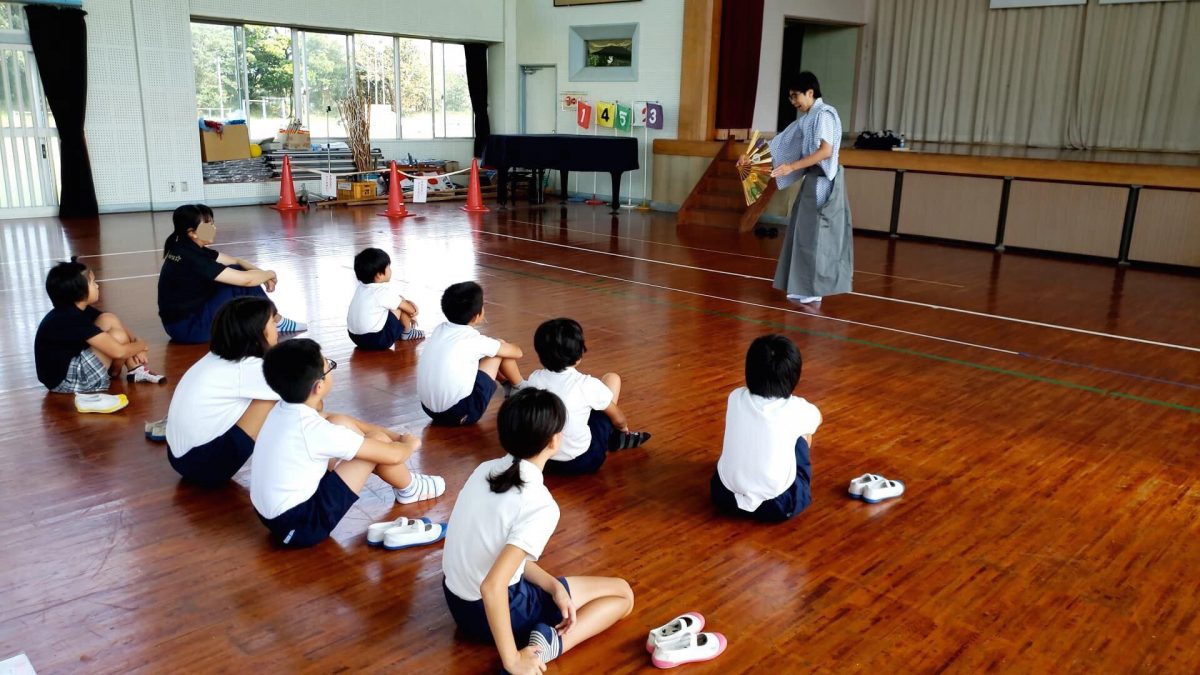
A stage for Kyogen performers living in the 21st century
Vol.10 "Six Jizo" Workshop
Ozo doctrine (Noh performer Kyogen style Ozo school)
You can see the ocean and mountains from the gymnasium.
In this wonderful location, I was working on a new Kyogen play with the children.
The theme of this event was to adapt a local tale into a Kyogen play, and the subject was "Six Jizo."
It's a simple story about how, long ago, some children were asked by a lord to pray for rain, but they accidentally splashed water on a Jizo statue, and it started to rain.
So I added a little dramatization to the story, creating a very Kyogen-like ending: "As the children perform a rain-making dance, the Jizo statue is drawn in and begins to dance as well."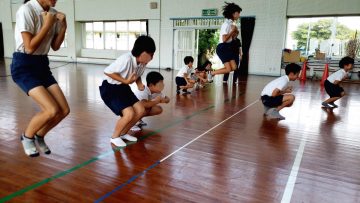
First, we hand out the script and practice the pronunciation and gestures.
The children were nervous at first, but little by little they got used to it and relaxed. Then, even the children who couldn't speak well (they had a great voice but found it difficult to do so in front of others) were able to speak little by little, they started smiling more, and they memorized their lines well.
Next is the movement as a kyogen.
Kyogen performances all have set forms, and it is important to hone your skills as you have been taught by your teacher.
This is where I stopped.
When working on a new piece with children, is it important to start with a set format? Considering the limited time, this may actually be a hindrance. In order to stimulate children's sensibilities, isn't it important to create with free imagination, without being bound by a format?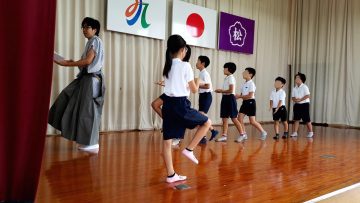
With this in mind, I let the children freely decide the pose and expression of Jizo. I wanted them to be independent and creative, and to move however they wanted. We then compiled that into a "form" and taught it to them.
What's important for children is not to tell them what is right or wrong, but to support, acknowledge, and guide the ideas they come up with.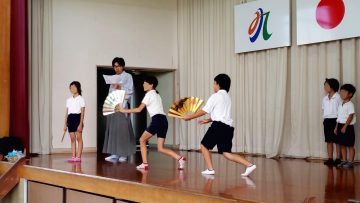
I think the children felt the joy of being able to express the movements they had thought up as a "form." The smiles and serious expressions on their faces when they stood on stage spoke for themselves.
I received so many smiles, and the three days we spent together were an irreplaceable time for me.
